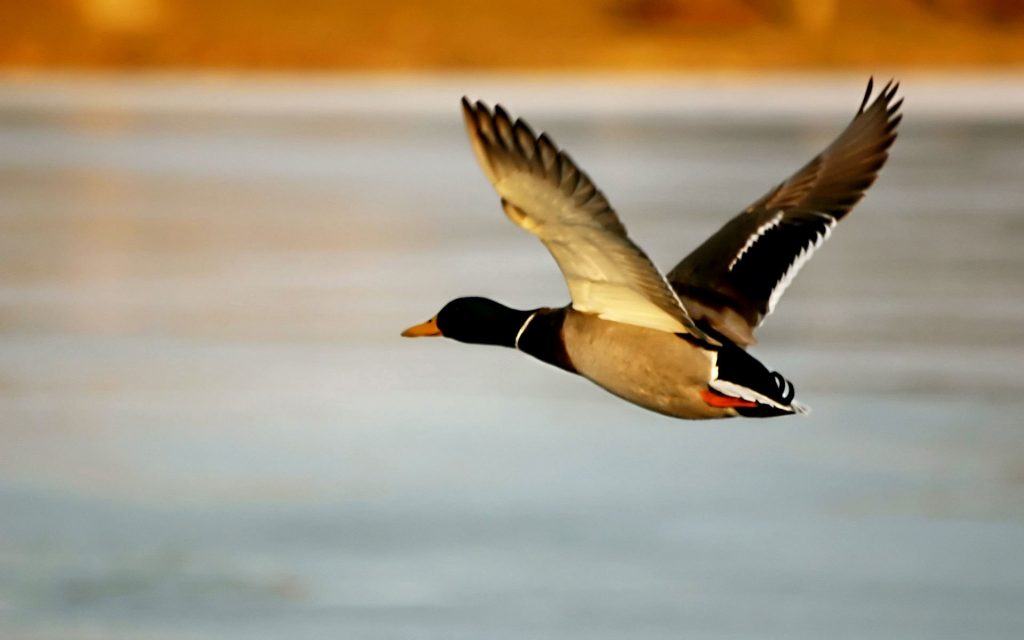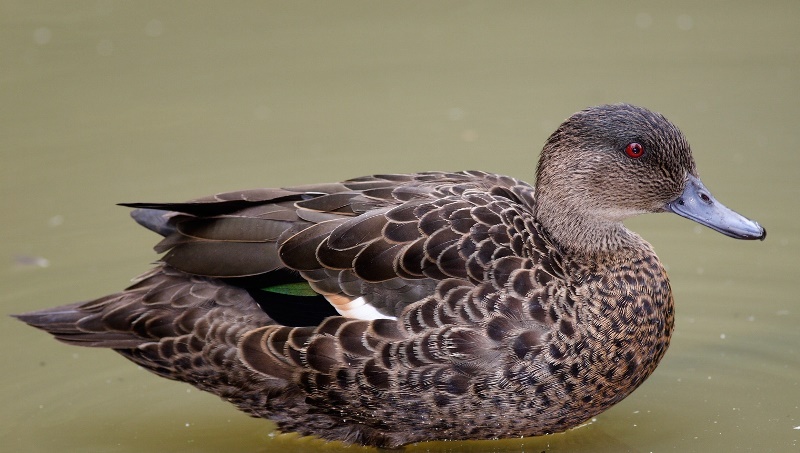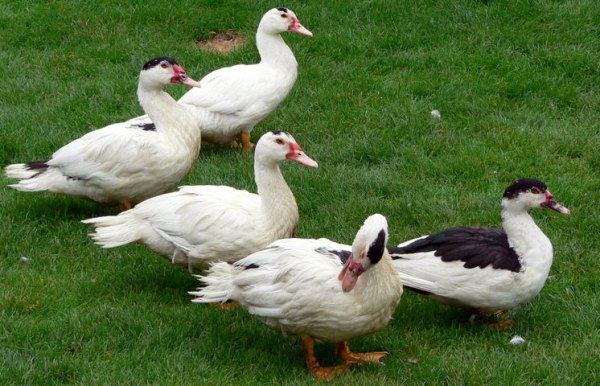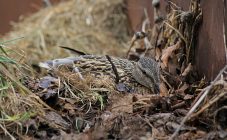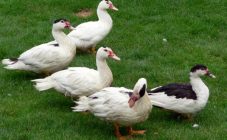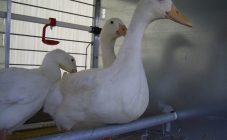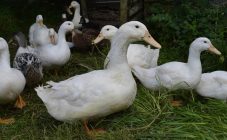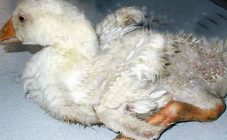Ducks can be wild or domestic. Many breeders are engaged in breeding both those and other birds, but the wild ones are of the greatest interest lately. Therefore, it is worth figuring out how long ducks live and what the conditions for their breeding should be.
Description of the wild duck and its habitat
Wild ducks are birds with a fairly large body. Its length ranges from 45 to 65 cm, and the weight of an adult can reach 2 kg. The voice of a wild bird is practically no different from domestic ones.
A duck can be distinguished from a drake by its color: a reddish body and a light abdomen. Its beak is pink with a slightly darkish center. Such plumage is associated with bird habitats. The plumage of the male is distinguished by its brightness and originality: the neck and head are black with a rich green tint, and the breast is brown. By the end of summer, the drake's beak turns dark green.
For the winter, they fly to Western Europe, Africa. Many birds prefer to go to the Mediterranean for the winter. If the water in the reservoir does not freeze during the winter, birds may not leave it. You can meet the wedges of flying away ducks in the middle of autumn.
The nesting period for wild ducks begins in the middle of spring. For the construction of nests, they choose river valleys, where stagnant water and a lot of vegetation. As a rule, nests are located in dense thickets of grass or dead wood. For their construction, birds use dry branches, grass, reeds or weeds. The nest looks like a deep pit, the bottom of which is covered with dry grass. Before laying eggs, the female covers the bottom of the nest with feathers and down that fall from her breast.
The diameter of a duck nest can be in the range of 150 - 300 mm, and the height of its sides reaches 130 mm. One clutch can contain from 8 to 11 eggs, which have a greenish tint. The duck incubates the clutch for 3 weeks. The duckling, which is 60 - 70 days old, can already fly.
These birds are considered caring mothers. In case of danger, they emit a specific sound, which is an alarm signal for ducklings. They instantly rush into deep thickets and sit there very quietly until the threat passes. At this time, the female tries to distract the predator or hunter from the place where her chicks are hiding.
There are several breeds. Among the most common are the following:
- Mallard... The length of her body can reach 50 - 65 cm. The plumage on the head and neck has an emerald color with a pearlescent hue, and the neck is edged with a white belt. Females and males differ not only in color, but also in size. The body length of the female in rare cases can be more than 45 cm. The color of the plumage is brown, which allows her to camouflage herself in the wild.
- Sviyaz. Birds of this breed have a light-colored plumage, which on the head changes to brick. During the flight, the bird makes a loud cry, which often attracts the attention of hunters.
- Teal. The ducks of this breed got this name due to the characteristic sound they make during the flight. The size and body weight of females is less than that of males. In the middle of spring, males change the color of the plumage to exactly the same as that of the female.
- Killer whale... This breed of wild ducks is widespread in Siberia. Their body weight can range from 1 to 1.5 kg. The paws and beak of birds have a rich black hue.
- Pintail. Birds can be found throughout the country, except for the North and the Far South. A distinctive feature of these ducks is that their body weight does not exceed 1 kg. In addition, they have a thin and long neck.
Features of the content
Often, breeders breed wild ones at home. Compared to domestic ducks, such ducks are completely unpretentious in keeping.
The cages in which the bird will be kept do not need additional heating during the cold season. If the house is built of bricks, the birds will feel great in it throughout the winter.
Since ducks are waterfowl, for their successful keeping, it is recommended to build an open-air cage with a bathing tank, the territory of which must be fenced off with a net. Do not forget that you need to build a small canopy that will protect the birds from sunlight or rain. Ducks fly well, so the height of the net that encloses the aviary should be at least 3 m.
Drinkers and bathing containers should always have clean water in the required amount. If you do not do this, it is possible that the birds will get sick.
Fresh grass and small fish must be included in the diet of ducks. On the territory of the poultry house and aviary, there must be a container with sand, which ducks love to peck. Its use helps to regulate the functioning of the stomach and intestines.
The room in which the birds are kept needs periodic ventilation and disinfection. Thus, it will be possible to prevent infection of the livestock with infectious and viral ailments.
Females start nesting with the onset of warm spring days. Some breeders prefer to prepare their own nests for the birds. To do this, they use wooden boxes, the height of the sides of which does not exceed 20 cm. It is recommended to cover the bottom of the box with hay or dry grass. The male also takes an active part in the education and protection of young chicks.
You can feed the birds with combined feed, buckwheat, millet, barley and other cereals.
Experienced breeders recommend feeding the livestock with a combination feed designed specifically for wild birds.
Young ducklings are fed exactly the same as chickens of domestic bird species. Do not forget about using special fortified supplements. Subject to all the conditions for keeping wild ducks, in a few months the ducklings will catch up with the adults.
The lifespan of wild ducks depends on the breed of the bird. Experienced breeders prefer these breeds of wild ducks that are specially bred at home:
- Mandarin duck... China is considered the birthplace of this breed of wild duck. Its body weight ranges from 300 to 500 g, and the dina does not exceed 35 cm. A distinctive feature of birds is their bright color, which varies from rich orange to dark green. Ducks have a red beak and black legs. How many years a duck of this breed lives depends on the breeding conditions of the livestock. With proper care, mandarins can live up to 20 years.
- Mulard. These ducks differ in that the females lay eggs, but remain infertile. This should be taken into account when choosing a given breed of bird. Mulard ducks are raised only for meat and eggs. The female is capable of laying up to 200 eggs per year.The weight of an adult bird reaches 4 - 6 kg. Caring for them is no different from caring for other breeds of wild ducks.
- Mute... This species of wild ducks belongs to the meat sector. Females, of course, lay eggs, but very few. The plumage of birds is black and white. The red beak of the bird attracts attention, on the upper part of which there is a rather large fleshy growth. The weight of an adult bird ranges from 4 to 8 kg, and the body length does not exceed 90 cm. The female is capable of laying up to 100 eggs per year. Experienced breeders note the cleanliness of Mute birds. This greatly simplifies the cleaning of the poultry house and aviary.
Breeding wild ducks at home is considered to be quite a profitable business: with little material and physical costs from a small livestock, you can get a sufficient amount of tender and tasty meat and a lot of eggs.
